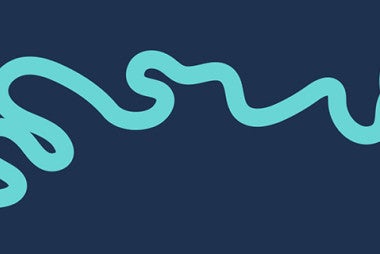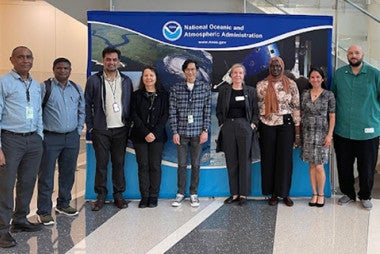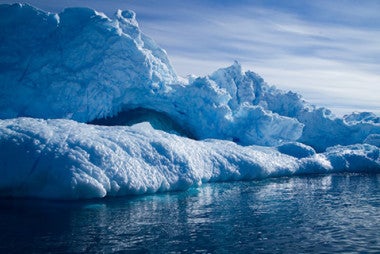Hawaiian Monk Seal Health Program
The activities described below were partly funded through CPAESS' (formerly JOSS) Cooperative Agreement with NOAA, Marine Mammal Health and Stranding Response Program. With these funds CPAESS provides assistance for response to live, dead, injured, and entangled marine mammals.
The Hawaiian monk seal (Monachus schauinslandi) is critically endangered and lives exclusively within U.S. waters. Only about 1,100 Hawaiian monk seals remain and their numbers are scattered from Hawai'i Island at the southern end of the Hawaiian archipelago to Kure Atoll at the northwestern end. They are relatively solitary individuals, and do not haul out on beaches in large aggregations like many other seal and sea lion species in other parts of the world.

(Photos collected under NOAA-NMFS Permit 10137-07)
The majority (~900 seals) reside in the remote Northwestern Hawaiian Islands, and this is the section of the population that is declining most rapidly. Threats to monk seal survival include shark predation, competition for prey with other marine predators, intra-species aggression, entanglement in marine debris, disease, fisheries interactions and climate change. The relative magnitude of these theats varies across the archipelago. It is thought that foraging conditions and other factors are more favorable for monk seal survival in the Main Hawaiian Islands (Hawaii to Kauai), and researchers are observing that more seals are using these islands over time. However, with an increasing number of seals (~200 seals) using the Main Hawaiian Islands, interactions between seals and humans are increasing and require attention as well.
Hence, population recovery efforts are vast, multidisciplinary and collaborative. The NOAA Hawaiian Monk Seal Research Program leads research efforts, including population assessment, foraging ecology, health monitoring and disease surveillance, genetics, and survival enhancement. Because of their remote location and relative inaccessibility, a great deal of effort also goes into the logistics inherent in arranging for the remote field camps that collect data for these studies in the Northwestern Hawaiian Islands. You can learn more about each at NOAA's site and by following the Hawaiian Monk Seal Research Program on Facebook.

(Photos collected under NOAA-NMFS Permit 10137-07)
NOAA works closely with state and Federal partners, as well as non-governmental organizations. The Marine Mammal Center (TMMC), is a non-profit organization based in Sausalito, CA. TMMC is building a hospital specifically for the treatment of sick and injured monk seals in Kailua-Kona, Hawai'i. NOAA, TMMC, the Monk Seal Foundation, and other volunteer organizations provide outreach for residents and visitors in the Main Hawaiian Islands. Together, these groups are working to understand more about this population, identify ways to recover the species and implement those strategies.
Reported by Michelle Barbieri, DVM, MS, The Marine Mammal Center/NOAA Fisheries









